
Welcome to Easy Anatomy online. The first section of this course includes lessons from our DVD on each body system. Each lesson covers the basics of each system, and a variety of pathologies that can happen in each system, and how massage relates to each system.
The next section is 4 brief lessons that are less than 5 minute each on the basic muscles of each body area.
The final section includes in-depth information on each muscle area. This section of the video uses our anatomy app “muscle and bone anatomy 3d” and the instructor discusses the anatomy while manipulating the 3d models. With each of these sections, the understanding of the muscular system builds adding more depth and clarity.
This class also includes access to our 3d anatomy viewer which allows you to rotate the body and view 120 muscles and 100 bones with detailed info on each.

Lessons
Anatomy Viewer for Easy Anatomy
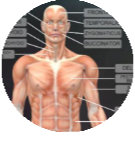
Skeletal system

This lesson covers the anatomy of the skeletal system, the names of the bones, the composition of bones and the various types of joints. The conditions covered include fractures, osteoporosis, spondylosis, shin splints and postural deviations.
Lymphatic system

This lesson covers the anatomy of the lymph vessels, lymphatomes, drainage patterns, function and location of lymph nodes. Conditions covered are the common cold, lymphangitis, chronic fatigue syndrome, HIV. Some basic lymphatic drainage strokes are also demonstrated.
Circulatory system

This lesson covers the function of the heart, capillaries, arteries and veins. The conditions covered are varicose veins, diabetes mellitus, heart attack and hematoma.
Nervous system
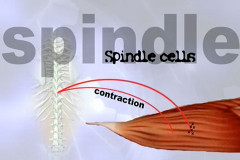
This lesson covers the differences between the somatic and autonomic nervous system. Conditions covered are multiple sclerosis, parkinson’s, peripheral neuropathy and stroke. Also covered are basic massage techniques for the nervous system.
Muscular system
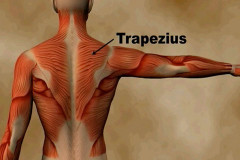
This 24 minute lesson covers the various types of muscles, how muscles interact with the nervous system (golgi tendon organs and spindle cells), and how to use these principles in a bodywork session. Also covered are the names of the main muscles along with the movements of each joint. Conditions covered are strain, sprain, trigger points, pain-spasm-pain cycle, fibromyalgia, cramps (and how to relieve them), plus some basic massage techniques.
Spine muscles – brief

This short lesson covers the difference between the axial and appendicular skeletal system, and the muscles that control the spine.
Shoulder muscles – brief
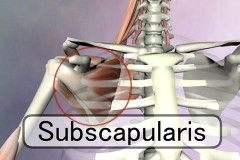
This short lesson covers the muscles of the shoulder, including the scapula movers and the rotator cuff muscles.
Hip muscles – brief
Free Preview
This short lesson covers the anatomy of the hip, and the muscles that attach to it and move the femur.
Face muscles – brief

This lesson covers the muscles of the face and jaw.
Spinal muscles

This lesson cover in-depth the anatomy of the vertebrae, the movements of each segment, and the muscles that move the spine. This includes the quadratus lumborum, longissimus, iliocostalis, spinalis, interspinalis, intertransversarii, multifidus, rotators, psoas, iliacus, rectus abdominis, and many others.
Neck muscles

This lesson covers the muscles of the neck, and the anatomy and function of the cervical vertebrae. Some of the muscles included are the sternocleidomastoid, levator scapula, infra-hyoids, semispinalis captious, splinius capitis, splinius cervicis, scalenes and others.
Elbow muscles

This lesson covers the muscles that move the elbow joint. This includes the brachialis, biceps brachia, triceps, anconeus, brachioradialis, and others.
Hip muscles

This lesson covers the bones and muscles of the hip. Muscles covered include the psoas, iliacus, gluteus medium, minimus, gluteus maximus, piriformis, obturator externes and interns, gemellus superior and inferior, quadratus femoris, rectus femoris amongst others.
Knee muscles

This lesson covers the function of the knee joint and the anatomy of the femur, tibia and fibula along with the various ligaments including the medial and lateral collateral ligaments, the posterior cruciate and the anterior cruciate ligaments. Muscles include the vastus medialis, lateralis and intermedius, along with the rectus femoris, semimembranosus, semitendonosus, biceps femoris, gastrocnemius and others.
Ankle muscles
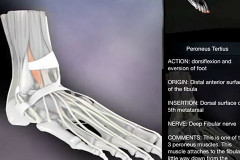
This lesson covers the bones and function of the ankle joint. Muscles covered include the peroneus longus, peroneus brevis, tibialis anterior, tibialis posterior, extensor hallucis longus, gastrocnemius, soleus and others.



Follow Us!